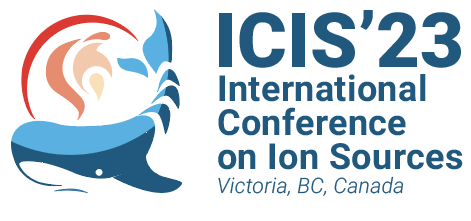Speaker
Description
Recently, the Research and development Negative Ion Source (RNIS) at National Institute for Fusion Science (NIFS) changed operation gas from hydrogen to deuterium. It is reported that the electron density differs by around three times with the operation gas [1]. The physical mechanism of the significant increase of the electron density is still not clear.
In the previous studies [2], a three-dimensional kinetic electron transport code KEIO-MARC has been applied to the analysis of hydrogen isotope effects on the increase of an electron density. Isotope effects on the Coulomb collision process, confinement by the sheath, and atomic/molecular processes have been analyzed under the condition of fixed background particle density (ion, atom, molecular). However, the increase of the electron density has not yet been fully explained.
On the other hand, the analysis using a zero-dimensional model was also done [3]. The model focuses on the isotope effect for vibrationally excited levels of electronically grounded hydrogen molecules. The results showed an increase of the electron density due to the difference in the ionization channel numbers via the molecular vibrationally excited state. However, this model assumes a Maxwellian electron energy distribution function (EEDF), which is different from that calculated by KEIO-MARC.
In this study, the zero-dimensional model is coupled with the KEIO-MARC code. The preliminary result for the hydrogen case shows that the number of low energy electrons (below 10 eV) increases from the previous result [2] due to the change of background hydrogen atoms, molecules, $\rm{H}_2^+$ and $\rm{H}_3^+$ density. In the presentation, the isotope effects of the vibrationally molecular excited state with the self-consistent EEDF will be discussed.
[1] H. Nakano, et al., J. J. Appl. Phys. 59, SHHC09 (2020).
[2] R. Kato, et al., J. Phys.: Conf. Ser. 2244, 012035 (2022).
[3] T. Shibata, et al., J. Phys.: Conf. Ser. 2244, 012002 (2022).
| Email Address | kengo.iwanaka@keio.jp |
|---|---|
| I have read the Code of Conduct to attend ICIS2023. | Yes |

